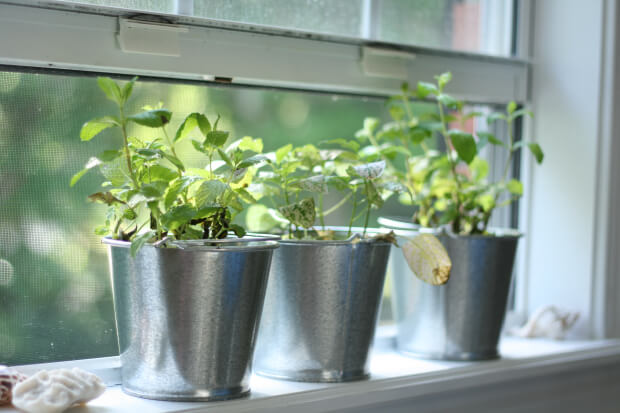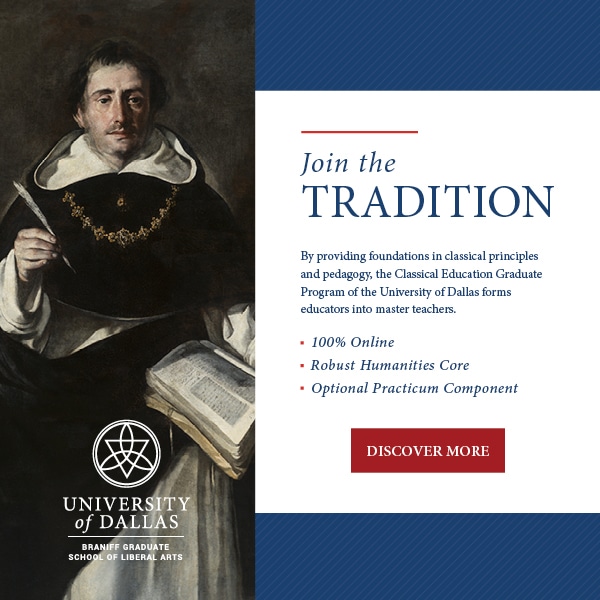Remote vs. Home Learning: What Else the Coronavirus Means for Classical Schools

In a recent blog post, Joshua Gibbs suggests that “What the Coronavirus Means for Classical Schools” is nothing less than a test of their true worth. That test lies in schools’ potential temporary transition to remote learning. If students can receive remotely everything which their teachers would have sought to give them in class, then, Mr. Gibbs suggests, the school may not be offering the education it ought to. A truly classical education offers not the mere transfer of information, which can be conducted remotely, but the transformation of individuals, which is communicated through real presence. “Any liberal arts class which is taught well simply cannot be ‘made up’ at home, for class itself is a transformative experience,” claims Gibbs; and therefore “this lately emergent spate of remote learning experiments is a fair test of whether a classical school really needs to exist, or if the school is simply a convenient (albeit expensive and unnecessary) middleman of knowledge.”
Nor is this test purely practical or pedagogical. Mr. Gibbs suggests a theological dimension as well: “If the physical absence of the teacher does not really change things— if the teacher can truly be reduced to a talking brain— perhaps the students can be reduced to talking brains, as well, and the Incarnation really was something of a waste of time.” And therefore, with typical flair, Gibbs concludes, “If the remote learning experiment your school undertakes as a result of the coronavirus pandemic is a complete failure, well, I see it as a sign of tremendous sophistication.”
But I have, if not a quibble, at least a question about this conclusion. What if remote learning is not the only option for classical schools on coronavirus shutdown? What if another experiment is possible; not remote learning-at-home, but actual home learning? And what if it achieved moderate success?
~
I make these distinctions because they have been significant in my own experience. I was homeschooled “all the way through.” Moreover, I was homeschooled the old-fashioned way: by myself, at home. In our town, there were few of the co-ops or half-week schools that have since proliferated, offering homeschoolers complete curriculum, pacing, and support in instruction and assessment; those that existed were in their early stages, rather wobbly in standards, and my mother preferred to plan our schooling by her own instincts and ideals. In my elementary-school years, she organized a non-academic co-op with a few other church families; we met every other week, had chapel and show-and-tell and a rousing game of kickball or Red Rover, and did wonderful extra-curriculars like sign language, art, and historical cooking. I attended Bible study and piano group classes weekly, and relished those couple of hours with peers, and was incredulous that anyone would consider me “unsocialized.” Nevertheless, my school hours were spent in our nook of a school-room, myself, my mom, and my two younger sisters, each of us alternately working through the tasks my mom punctiliously assigned for each day and then discussing with her the feedback she would write on each one.
At that time, ABeka was still by far the most accessible, widely-used homeschool curriculum, and I worked my way through plenty of ABeka textbooks (and even a few video classes, pre-recorded at Pensacola Christian School sometime when female teachers and high school students alike wore big, pouffy blouses and bigger, pouffier perms). But one year, at a homeschool convention, my mom’s eye was caught by a display at the booth of a vendor she hadn’t previously heard of: a timeline made up of cards, each with classical artwork printed above a date and event from the history of ancient Greece and Rome. The Veritas Press history curriculum, recently published, captured my mother’s imagination; and, once she brought it back to our schoolroom, it captured mine and my sisters’ as well.
From then on, we were classically homeschooled—not in the thorough-going way that today’s resources make possible, but with all the enthusiasm and zest of new discovery. The Well-Trained Mind and books from Memoria Press, Canon Press, and Classical Academic Press (discovered through homeschool conventions and mailed catalogues; “google” wasn’t yet a verb) kept company on our shelves. We attempted Latin and logic. We read aloud for what must have added up to days—A Child’s History of the World, the Genevieve Foster history books, and almost every title of historical fiction in our curriculum catalogues. We watched our mom go giddy with excitement as she made the connections her own education had missed—and, like a one-year-old who would rather play with mama’s pots and pans than his own baby toys, we measured the worth of what we were learning by our mother’s eager participation in it. We read, on our own, lots and lots and lots of old books, Great Books. We started reading them before anyone told us they were too hard to appreciate without a teacher’s help, and by the time someone mentioned it, we already knew better; not that we thought we fully comprehended them, by any means, but we knew for a fact that they were wonderful. We wrote about them. We talked about them, in the car and around meals and on walks and while saying goodnight. We were so preoccupied with them that we never missed the cell phones and social media we didn’t have, and our times in the company of our peers were happy, busy, and brief enough that they roused no discontent.
At the end of my high school years, I traded my South for the Midwest, my schoolroom for a residential liberal arts college, my dead-author teachers for quite alive ones; I transitioned from homeschool to “regular school,” and knew for the first time the unique power of experiencing my beloved books and ideas in the company of classmates and teacher. Whereas I’d been accustomed to reaching understanding by a long, wearying trek through an entire tome, here one classmate’s question or professor’s insight could guide our whole class to epiphany, as naturally and delightfully as a mountain climb yields a view.
So I have experienced, and have loved, both classroom learning and home learning. In my estimation, they are different. They yield different accomplishments, different attitudes, different students, different people. They yield different strengths and weaknesses, virtues and vices.
I would never claim that a homeschooled student gets the same education as one who attends a good classical school. Much as I love, and consider myself shaped by, classical education, there are big gaps in my learning and experience that a classical school would probably have filled: I might have reached Latin fluency, might have caught some teacher’s contagious delight in math, might have contemplated the questions that fascinate other minds rather than got stymied in my own, might have had more concrete and more varied exemplars of what the classical life looks like through observing the lives of my teachers; and that’s just the beginning of the list.
But neither would I claim that the student who attends the good classical school gets the same education as a homeschooled student, for the homeschool student has the chance (though by no means the assurance) of getting something that doesn’t grow in schools. However thorough the curriculum, however inspiring the instructors, however formative in habits and liturgy a classical school might be, it cannot by definition alter the fact that these qualities are rooted in the school; and to make them part of the student’s identity, home, and life outside of school requires a labor of transplanting that, just as in the garden, is a fragile task threatened by both inclemency in the environment and weakness in the plant. And the current environment is inclement indeed. Smartphones, social media, and even parental expectations often strike such discord with the goals of the classical school that it seems almost pitiless to task young adults with harmonizing them.
By contrast, the homeschool student has a chance of growing real learning, and real loving of learning, in native soil; has a chance of avoiding transplant shock, putting out deeper roots, and therefore, perhaps, yielding greater harvest. In my homeschool years, I never had a transformative experience in a sixty-minute class period. But through the slow days and years, I and my family had a transformed life. I never had an omniscient-seeming teacher standing ready to guide me into understanding of the Great Tradition. But I had a mother (and father, and siblings) plunging eagerly forward beside me, each of us seeking guidance from the Great Tradition itself. And as we together met the wisdom and virtue of the ages, our tastes and desires and convictions—what we listened to, what we talked about, even where we worshipped—changed, was transformed.
If in some sense, as Mr. Gibbs eloquently implies, real teachers imitate Incarnation, the Logos taking on flesh, then I think a home education can go a step further; it can re-enact Immanuel, God with us, God among us.
~
If this is true, then the coronavirus pandemic might actually present the opportunity for a different kind of experiment than the remote learning one.
I have been contrasting school learning and home learning; remote learning is yet a third thing, different from each of the other two. School learning takes place at a school amongst teachers and students. Home learning, by my definition, takes place in a home amongst parents and children, who are sharing the roles of teachers and students. Remote learning (characterized by live-stream and/or prerecorded lectures, online discussion boards, email and texting communication, etc.) takes place in a home amongst teachers and students, with parents as administrators.
Much of today’s homeschooling today is actually remote learning; some people think that much of tomorrow’s school learning should also be remote learning. Remote learning might be a decent option for some families, in some situations. However, because it sets up education between teacher and student but subtracts physical presence, it loses the transformative power of school learning; and because it keeps school separated from the life of the home and family, it loses the transformative power of home learning. It is, I suggest, a best option only rarely.
A better option and a different kind of experiment, in the case of a classical-school shutdown, might be to give families a stint of home learning. Mr. Gibbs wonders whether a theology teacher who must transition to remote learning halfway through City of God “ought to tell the students, ‘Just read your Bibles and pray more,’ because theology class is theology class, not just theology work.” I tend to agree. But the homeschooler in me would take it further: the theology teacher could tell students with their families to read their Bibles and pray more together. A literature teacher could assign students with their families to read aloud through the next book in the curriculum, and hold an online class session solely for students to report on their respective families’ reactions and thoughts from the reading. A Latin teacher could assign students to teach the next grammar lesson to their families, and require the parents to pass the quiz as proof of the students’ understanding. A music teacher could assign students with their families to spend a Friday evening eating popcorn and listening to an entire Palestrina mass or Mozart symphony, in place of their typical movie night.
In this experiment, the students and families would not reach the same insights, the same transformation, that the teacher longs to lead his students towards. That would be the loss. But there is a chance, and just a chance, of a gain—a gain which, though not a victory of classical schools, is one of classical education: that the family together could reach its own transformation, its own bright transfigurement.

Lindsey Brigham Knott
Lindsey Knott relishes the chance to learn literature, composition, rhetoric, and logic alongside her students at a classical school in her North Florida hometown. She and her husband Alex keep a home filled with books, instruments, and good company.











